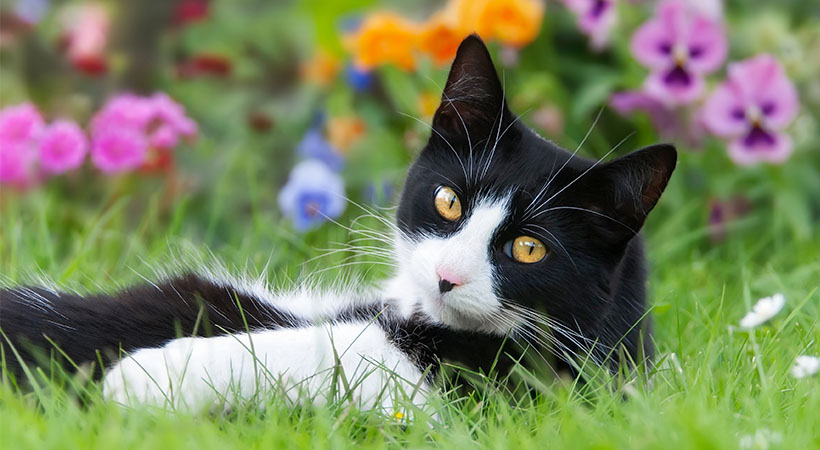Many cat owners enjoy allowing their feline companions to explore the great outdoors. However, keeping an outdoor kitty comes with many dangers that are often underestimated. There are health hazards and environmental concerns, so it’s crucial to consider the well-being of the pet and the local ecosystem before letting them roam free.
Here’s what people should know about outdoor vs. indoor cats and ways to enrich their lives in the great indoors.
Indoor vs. Outdoor Cats
Cats can be divided into two distinct lifestyles — indoor and outdoor. An indoor kitty enjoys the safety of a controlled environment, protected from hazards like traffic, predators, and harsh weather. On the other hand, those that live outside have the freedom to explore nature, bask in the sunlight and engage in their innate hunting instincts.
The choice often hinges on striking a balance between a cat’s natural inclinations and the well-being of the feline and its surroundings.
Why Do People Keep Outdoor Cats?
The reasons behind keeping outdoor cats vary widely. Some owners believe that allowing their pets to roam freely satisfies their natural instincts to explore and hunt. These felines can seem more self-sufficient, needing less direct attention and playtime. This outdoor experience can enhance a cat’s mental and physical well-being, leading to a happier and more fulfilled life.
People who live in rural areas may also view outdoor cats as natural pest control agents, helping to keep rodents in check. Many have barn cats that patrol for mice and other pests that can infiltrate outdoor buildings and fields. However, while these reasons may seem valid, they often overshadow the hidden dangers that outdoor life poses to cats.
Risks of Keeping an Outdoor Cat
The joy of an outdoor lifestyle comes with inherent risks and responsibilities. Being outside can expose cats to myriad potential dangers and pose threats to local wildlife as they indulge in their hunting instincts.
Outdoor cats face a multitude of health risks that indoor cats are largely protected from. They can be in danger as they navigate an environment brimming with uncertainties. The risk of traffic accidents is a significant concern, as busy streets can lead to injuries or even fatalities.
Exposure to Other Animals or Parasites
Outdoor cats can also get into confrontations with other animals, including cats, dogs, or wildlife, resulting in injuries, fights, and disease exposure. Parasitic infections such as fleas, ticks, and worms pose further health threats. They also have a much higher chance of transmitting diseases like feline immunodeficiency virus (FIV), herpes viral conjunctivitis, and feline leukemia.
These dangers mean that regular veterinary care, including vaccinations and preventive treatments, is imperative to maintaining their well-being amid the threats of outdoor life. These cats need regular checkups to ensure they remain healthy.
Weather Conditions and Outdoor Hazards
Exposure to the elements can also take its toll. Harsh weather conditions, including extreme heat, cold, rain, and snow, can lead to dehydration, heatstroke, frostbite, or hypothermia. Parasites, such as ticks, fleas, and mites, are more likely to infest outdoor cats, leading to discomfort and the potential spread of diseases. Additionally, these felines are at a higher risk of ingesting poisonous plants, trash, or substances, as well as encountering toxic chemicals used in gardens.
Impact On a Cat’s Emotions
In addition to the physical dangers, the emotional toll on these pets should also be considered. Cats thrive on routine and familiar surroundings, and abrupt changes can cause stress and anxiety. Being outside exposes them to a constantly shifting environment, potentially leading to heightened stress levels. This anxiety can manifest in various ways, such as altered behavior, decreased appetite, and a compromised immune system. Acknowledging the potential for emotional distress adds another layer of concern when considering their well-being.
The unfamiliar terrain beyond the home’s boundaries can easily confuse cats, resulting in them getting lost or unable to find their way back. Even with their keen senses, outdoor kitties can encounter difficulties navigating unfamiliar territories, putting them at risk of separation from their owner.
Keeping cats indoors also extends their life span as they are in a safe and secure environment. However, 63% of indoor cats are considered obese, posing additional health threats. Keeping a pet inside means owners must pay extra attention to their diet and activity levels.
Disruption to Local Ecosystems
The appeal of outdoor living for cats must be balanced against the potential disruption they can bring to local ecosystems. Their strong hunting instincts make them proficient predators of birds, small mammals, and insects. This behavior can have serious ecological repercussions, particularly in areas where certain species are already vulnerable.
The presence of outdoor cats can exacerbate challenges in areas where native species already face habitat loss and other problems. The instinctual hunting behavior of cats, combined with their agility and stealth, make them formidable predators, even in urban environments.
Outdoor cats contribute to declines in bird populations, potentially compromising the balance of local ecosystems. This underscores the need for thoughtful consideration of the environmental impact of roaming felines.
Alternatives to Outdoor Living
Pet owners have alternative options that prioritize their cat’s well-being and the environment. An effective solution is to create an enriched indoor environment that stimulates natural experiences. Providing scratching posts, interactive toys, window perches, and even designated outdoor enclosures called catios can allow cats to experience aspects of the outdoors safely.
Indoor cats are at an increased risk of becoming lethargic, depressed, and understimulated, so owners must ensure their happiness. Regular playtime, mental stimulation, and environmental enrichment are essential for maintaining a cat’s overall health and well-being. Additionally, spaying and neutering can help reduce the population of strays and ferals, lessening the impact on the ecosystem.
Cats Should Live Their Best Lives
While the appeal of allowing cats to explore the outdoors is understandable, the dangers associated with outside life are significant and should not be taken lightly. Protecting their health and well-being, as well as preserving the delicate balance of the local ecosystem, requires careful consideration. Choosing alternatives that focus on the safety of pets and the environment allows responsible owners to ensure a brighter future for kitties and the world they inhabit.
Guest Author:
Jack Shaw
Jack Shaw is a passionate freelance writer with a focus on promoting health and well-being. With a deep love for animals, he strives to bridge the gap between human wellness and animal care. His articles aim to inspire readers and their pets to lead healthier lives while fostering a compassionate connection with the world around them.







